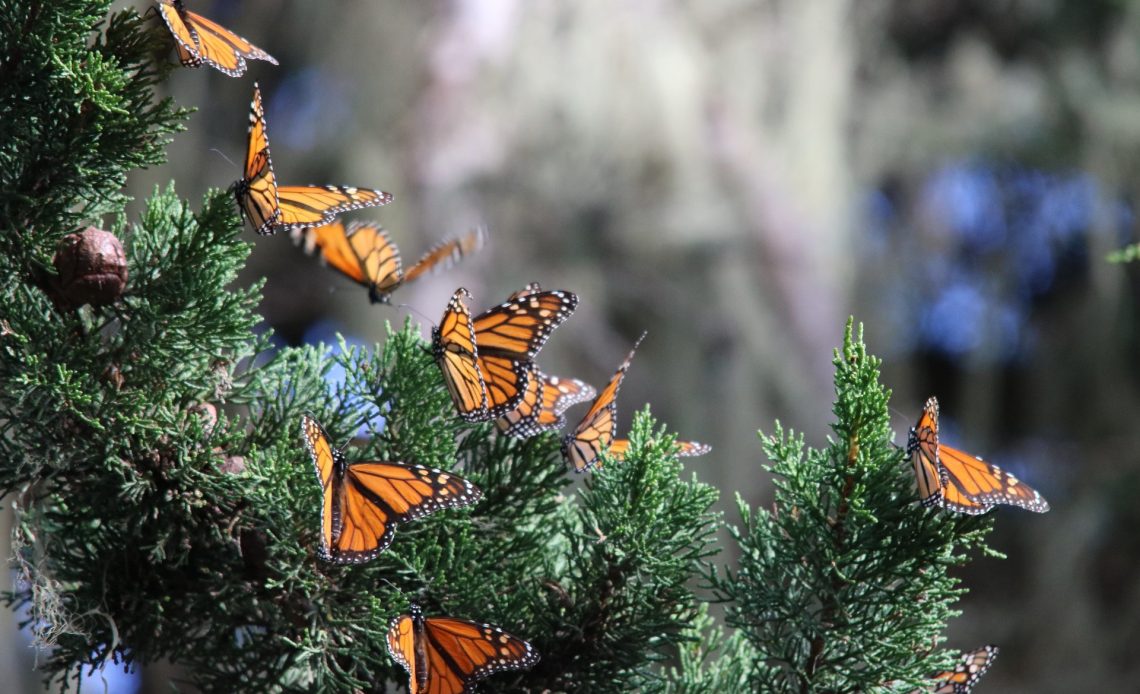

We’re here to help! Wild Yards is a completely free website that is 100% dedicated to helping you create a wildlife-friendly, sustainable yard. Read more
WildYards is reader-supported. When you buy a product through a link on our site, we may earn a comission. Every product is independently selected by our (obsessive) editors and our reviews are unbiased and objective. Read more about our mission or our privacy policy.
Butterflies are known for being graceful and delicate insects, but now and then, they do something that seems entirely out of character. For example, have you ever seen a butterfly shake? Butterflies can often be found shaking on the ground, trees, plants, etc. But why do butterflies shake?
Butterflies shake as a means of thermoregulation. That is to say that butterflies need to shake when they get cold to warm themselves up! Even as small creatures, they still need plenty of heat, and their shaking and other means of thermoregulation help them reach a comfortable level of warmth. Butterfly chrysalises, meanwhile, shake as a means of defense.
How does shaking help butterflies heat up?
Butterflies are cold-blooded animals, meaning they have no way of regulating their body temperature. Shivering or shaking is a form of thermoregulation for butterflies. The butterfly is heating its thorax, or midsection, by shaking or quivering fast.
Like most animals, butterflies require a certain level of heat to survive. Most butterflies need a body temperature of about 86 to 104˚ Fahrenheit just to be able to fly. Rather than evolving to adapt to the cold or chilly weather, butterflies have developed certain thermoregulatory behaviors which they use for warmth.
Warming their thoraxes will provide the butterfly with enough warmth to be able to fly, even for a short distance.
Butterflies do not only have to thermoregulate on cold days alone – it’s common you’ll find the occasional creature shaking in the full heat of the sun. There are a few reasons this can happen – they have either been resting in the shade or have drunk cold water that has cooled them down.
How else can thermoregulation help butterflies?
Butterflies will typically flutter around in the full sunshine thanks to both their need for warmth and their thirst for nectar. You’ll rarely see a butterfly heading into the shade on purpose unless it’s too hot – it’s simply evolved to thrive in warmer areas.
Butterflies can and will overheat if they take on too much sun – they are, naturally, highly delicate creatures. Just as a butterfly will shake itself into warmth so it can fly away and feed as usual, an overheating butterfly will flutter into a shaded zone temporarily.
Given that butterflies will only ever head into shade or half-shade to cool down, they’re unlikely to feed on plants that grow in these zones – focus on attracting butterflies with flowers growing out in the open.
Do butterflies do anything else to stay warm?
Butterflies also stay warm through dorsal basking, an activity that is much less labor-intensive for the insect. Have you ever noticed a butterfly on the floor, a window sill, or even on a leaf, sitting with their wings spread out? It’s warming itself – rather like sunbathing, but with an even cleverer practical purpose.
While dorsal basking, butterflies use the top layer of their wings to absorb the heat from sunlight. This warmth, in turn, gives them the energy that they need to get on with their day of flitting about – topping up on sugar from flowers to keep active.
Butterflies don’t always dorsal bask with their wings open – they don’t necessarily need to. For example, you may have even seen a butterfly lazing about with its wings closed. While they may look as though they are confused or fairly inactive, this is likely to be lateral basking, which means they are using the underside of their wings to absorb the heat.
Several butterfly families choose lateral bask- you will likely find green hairstreaks and clouded yellows, for example, resting completely closed-up to absorb the available heat.
Why do some chrysalises shake?
Chrysalises shake to protect themselves – it’s nothing to do with thermoregulation.
Once a caterpillar is wrapped inside a chrysalis, it is in an incredibly vulnerable state. Although they may not look too appetizing to us, many animals find chrysalises interesting enough to investigate, which can lead to serious damage – and can prove fatal for the growing butterflies within.
A shaking or wobbling action performed by a chrysalis acts as an alarm or warning – a growing butterfly will automatically trigger this shaking action if they sense something getting too close. The intention behind this, of course, is to scare away the intruding animal – and most of the time, it works.
Should I worry if I see a butterfly shaking?
No, seeing a butterfly shaking while out in the open is normal. Butterflies are tender creatures with short lifespans, and will therefore resort to cunning mechanisms (such as thermoregulatory shaking) to live for as long as possible. Despite their relatively short lives, butterflies are exceptionally resourceful.
The next time you see a butterfly shaking, don’t worry, it is unlikely to be in any pain. It’s simply warming itself up before it starts pollinating your garden!
